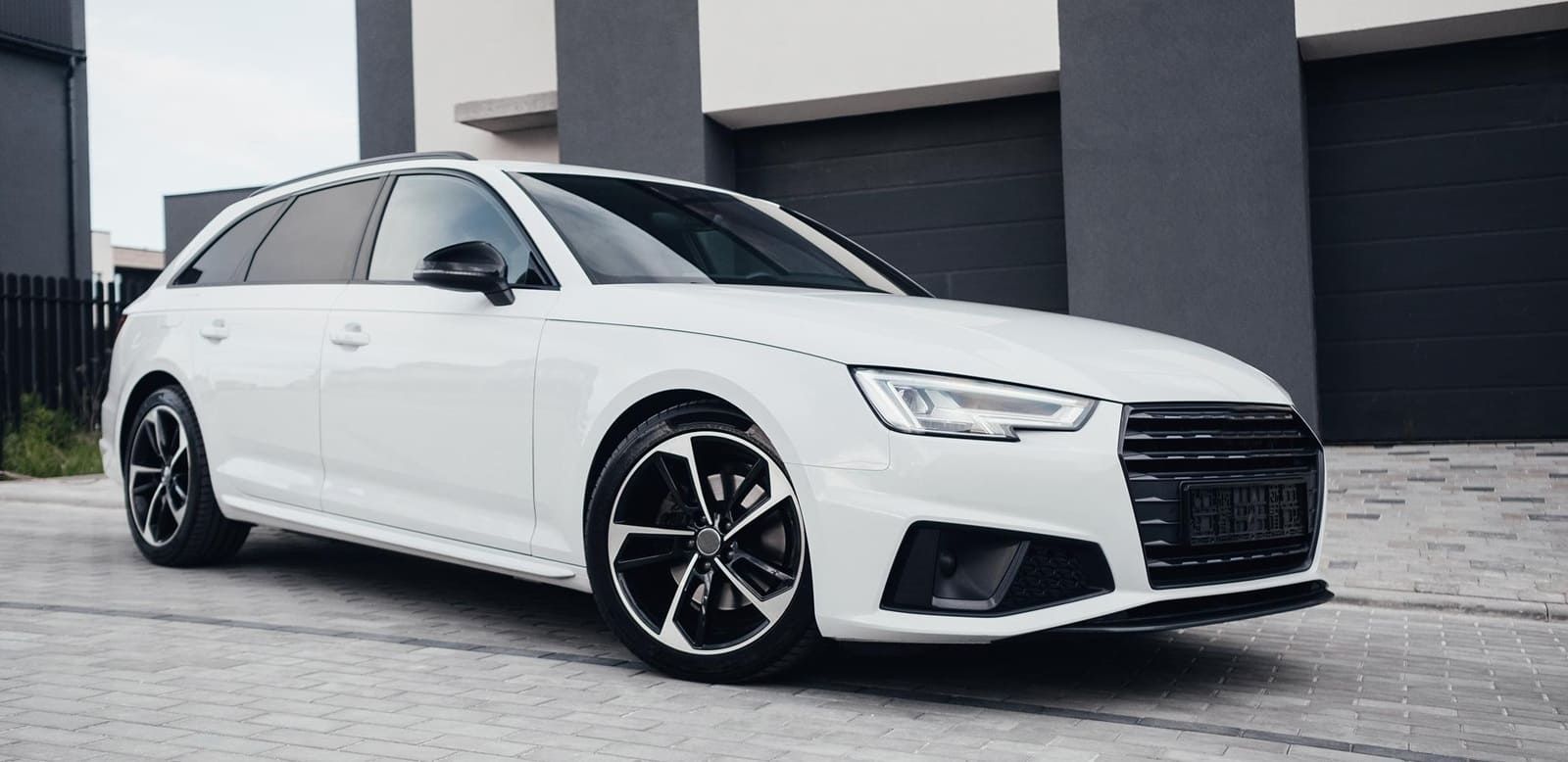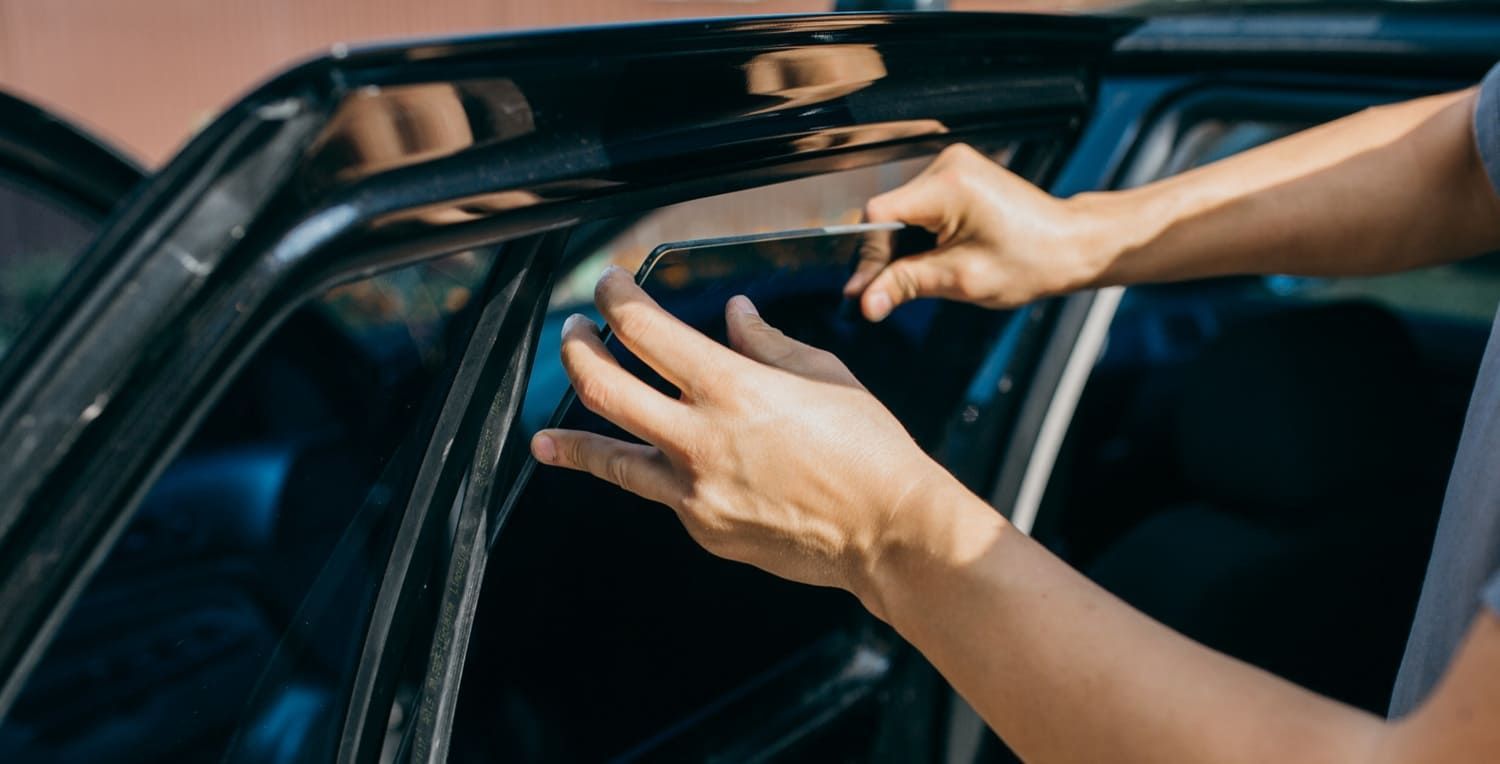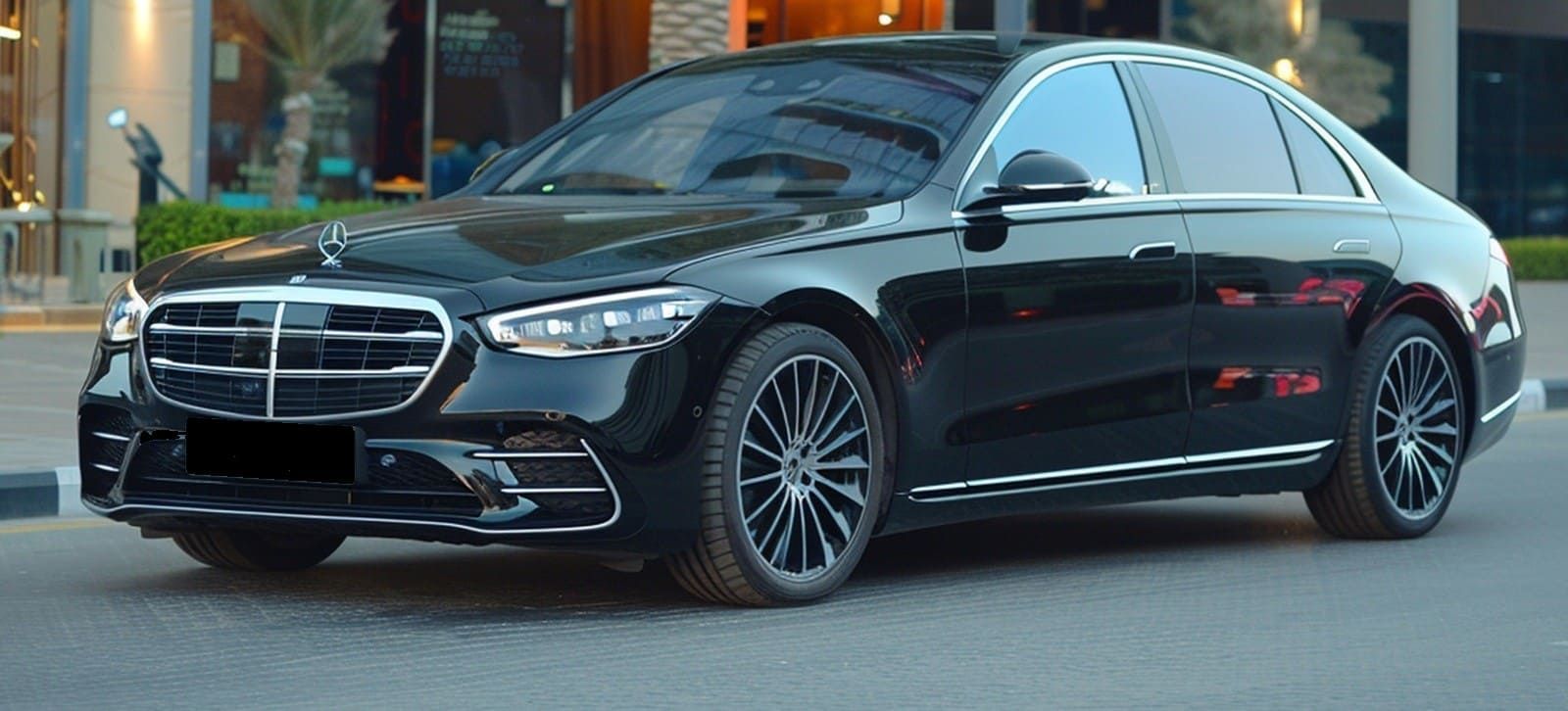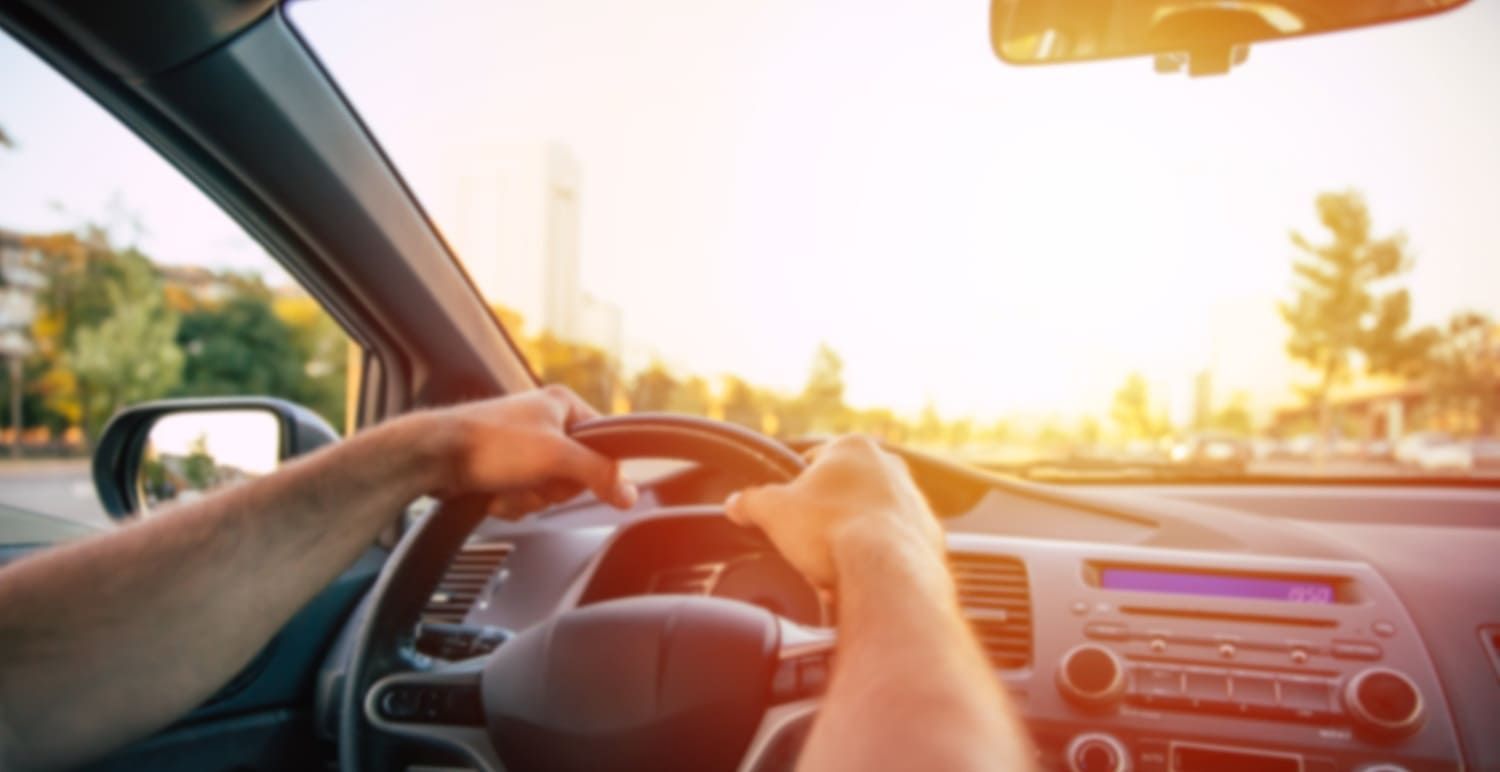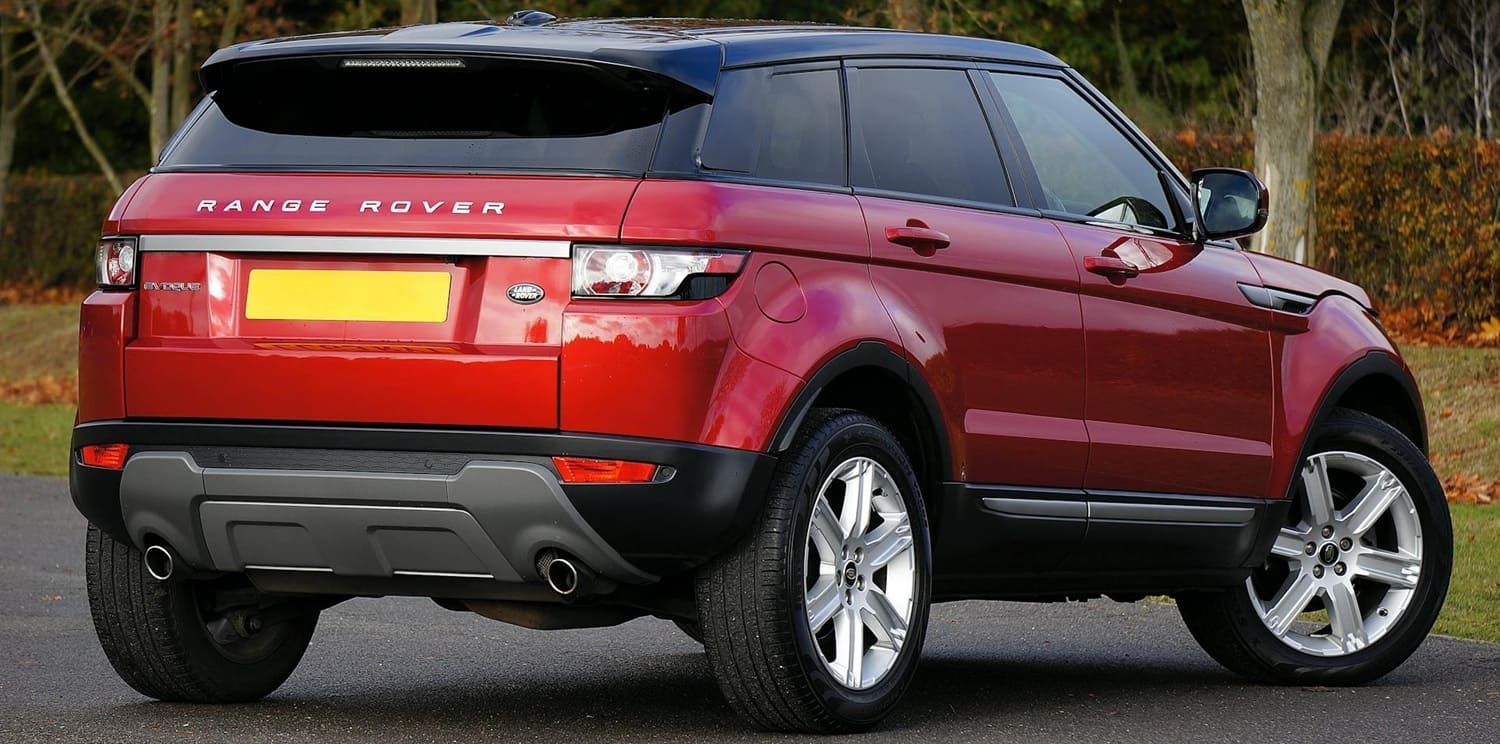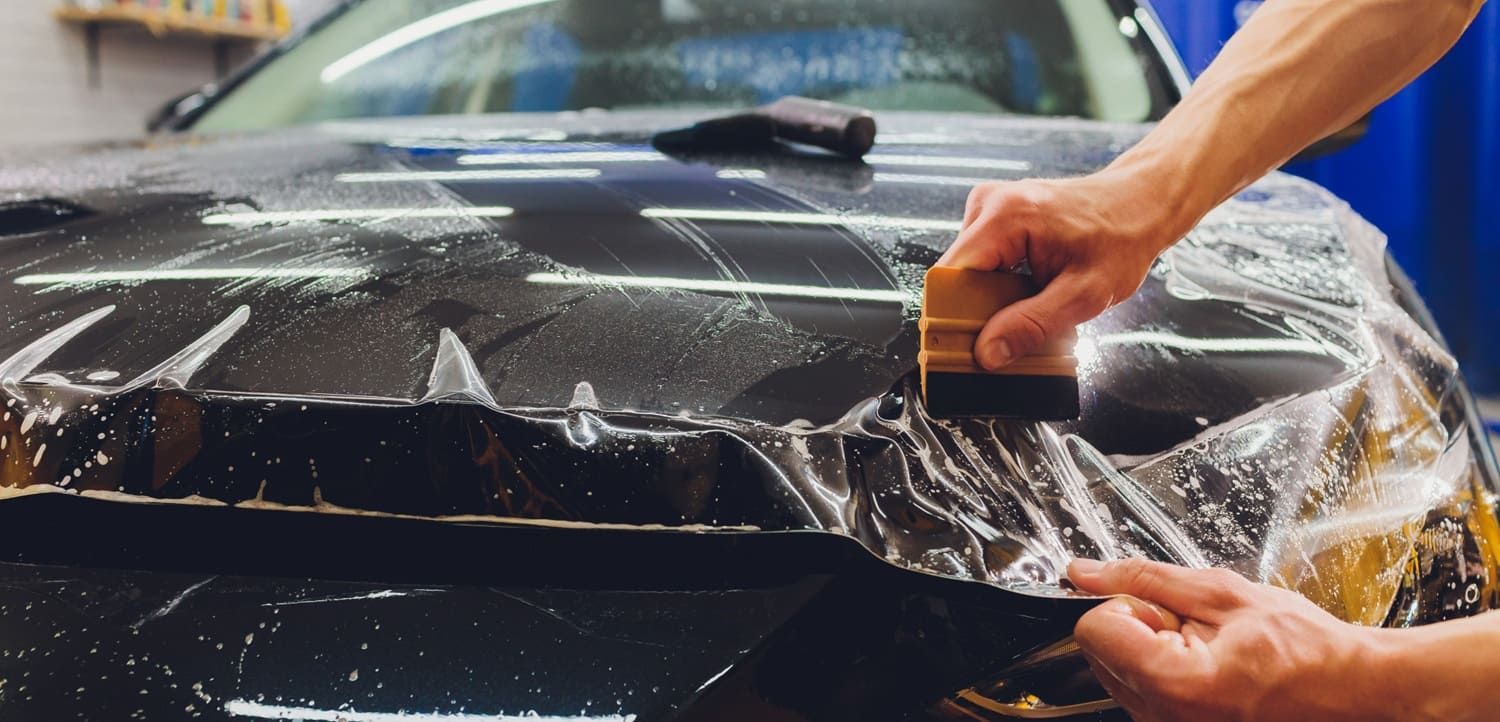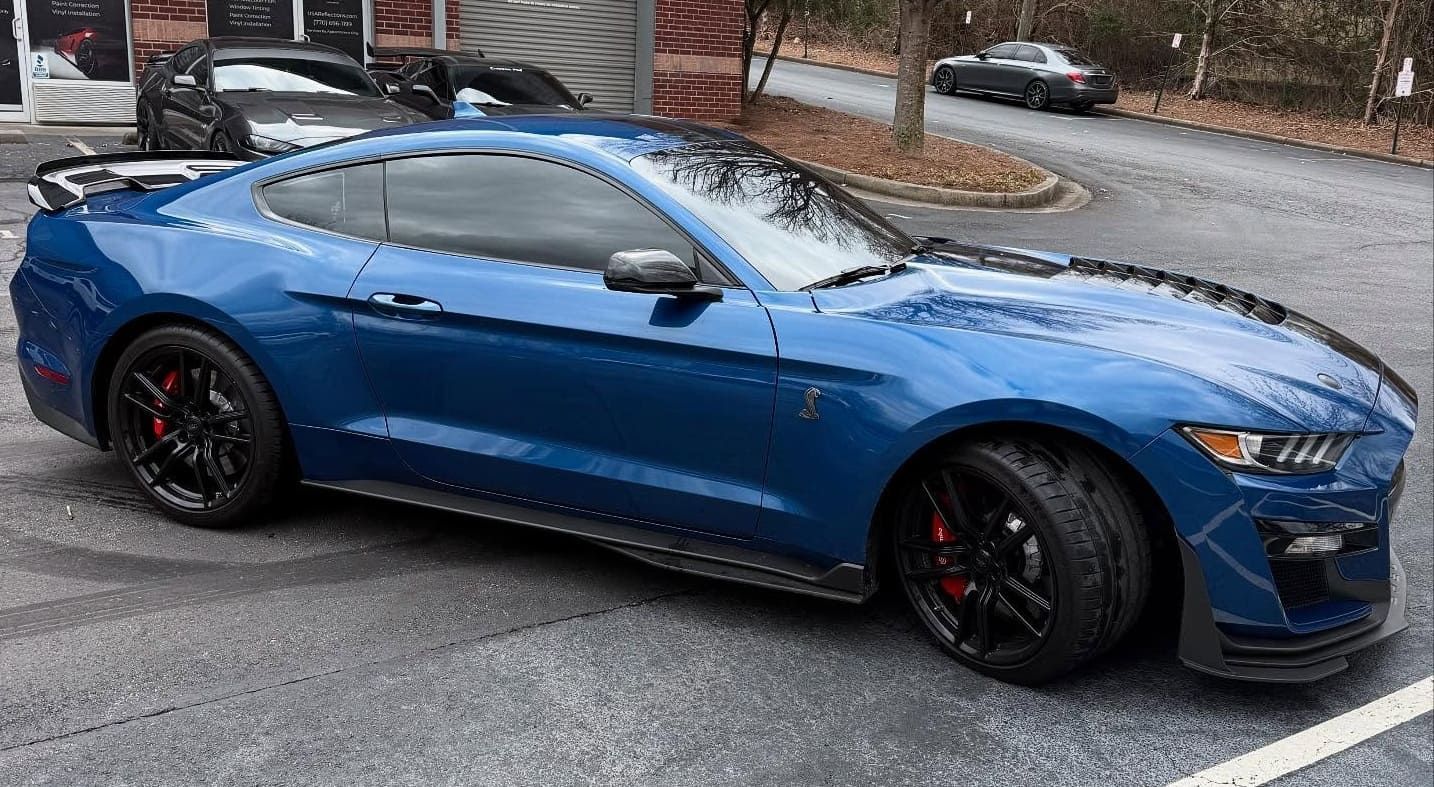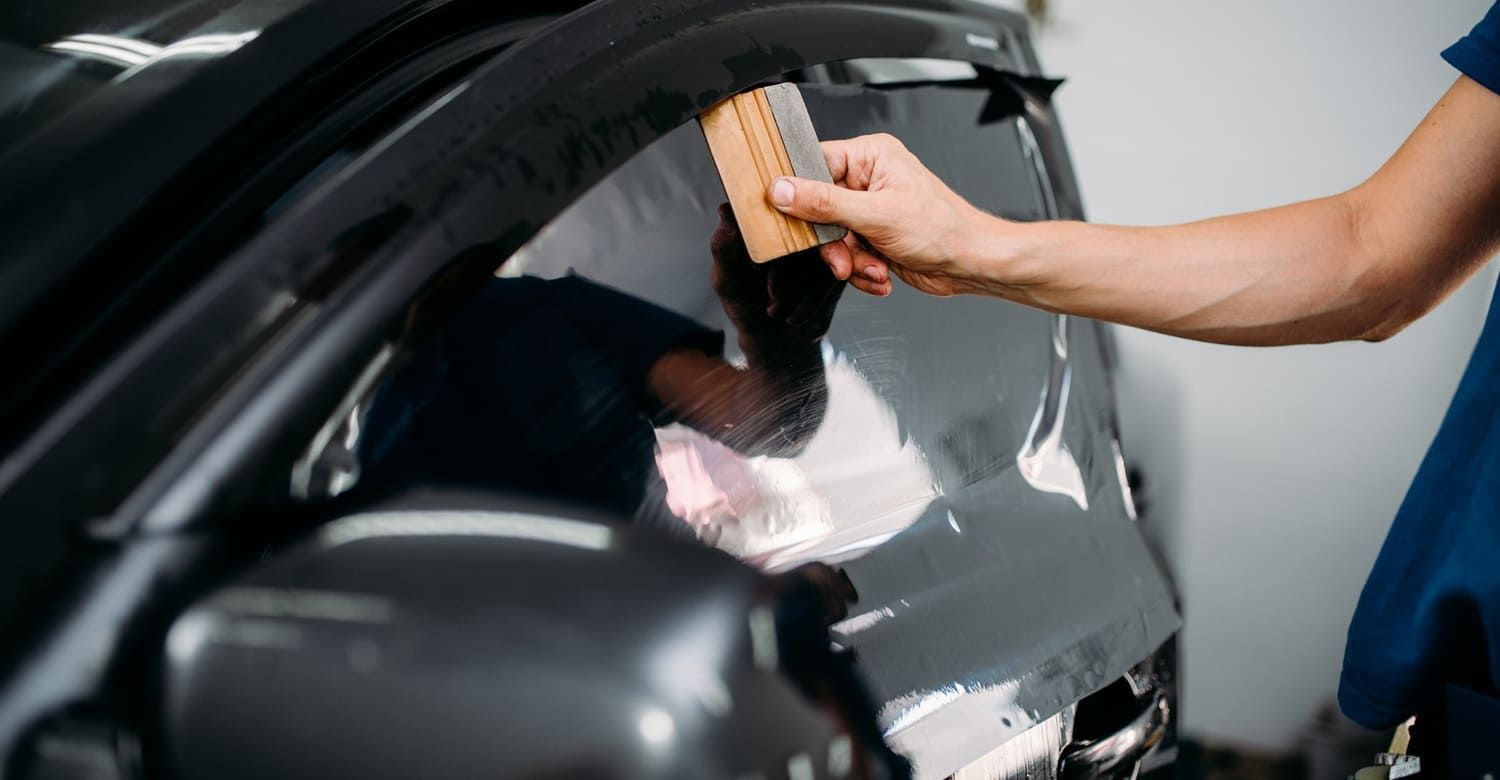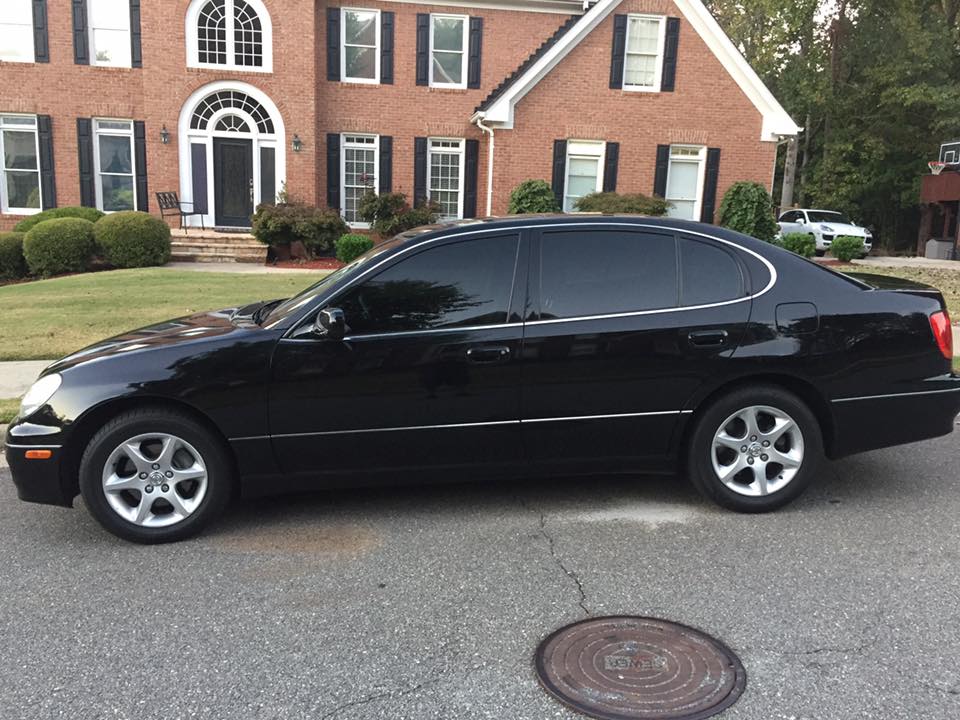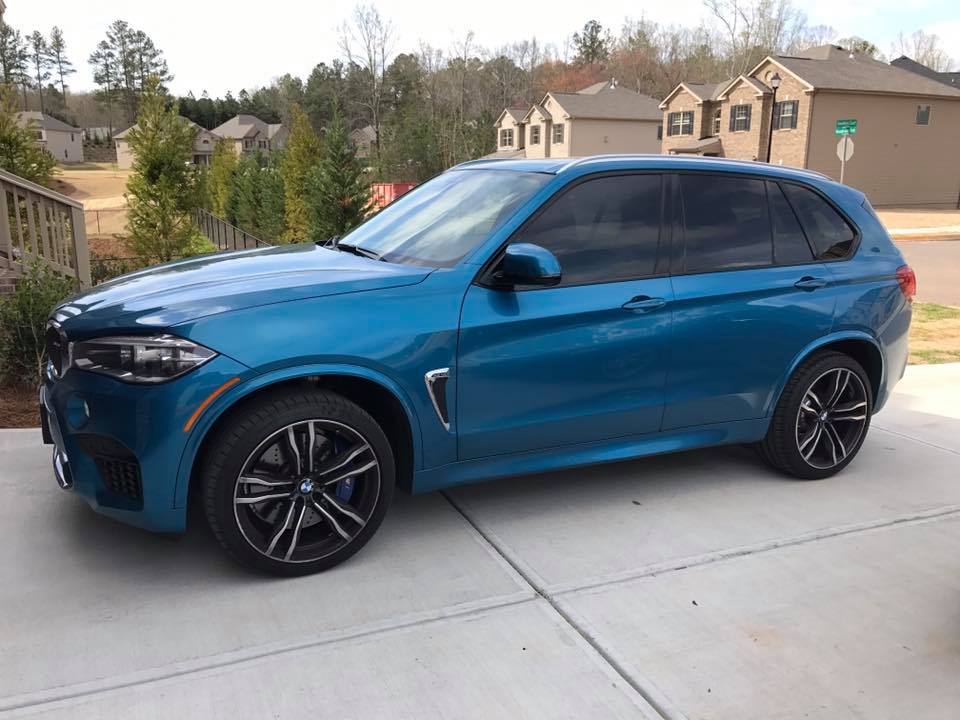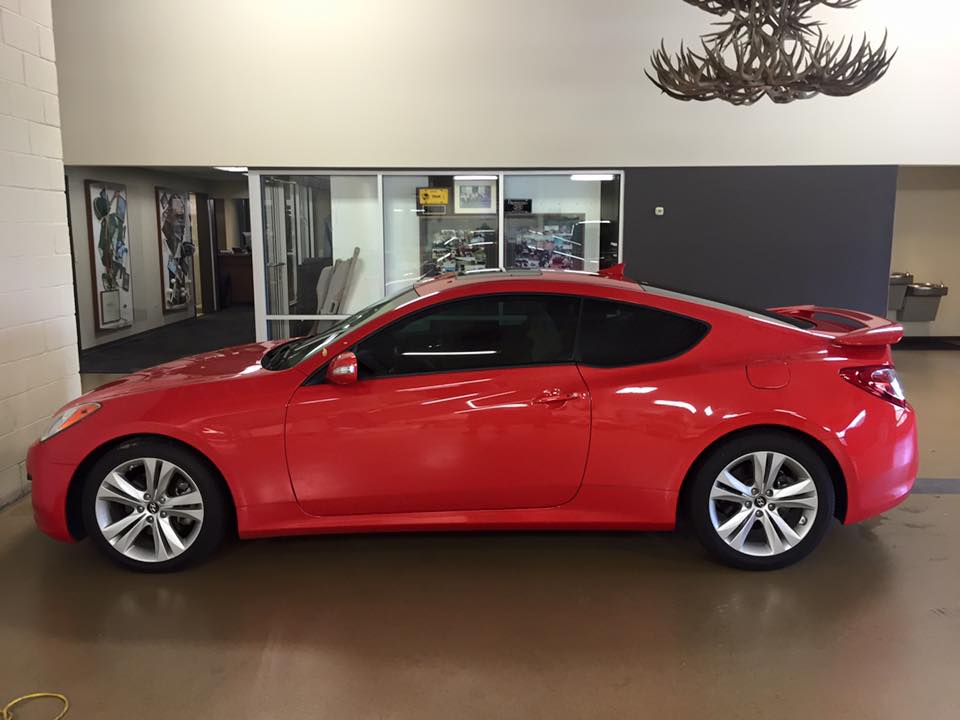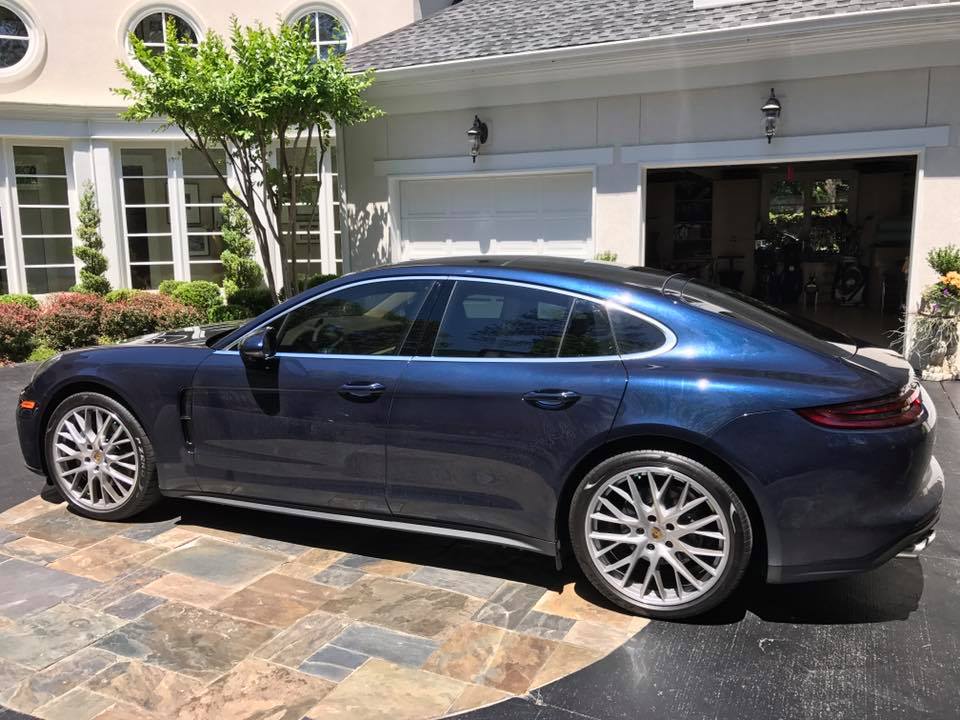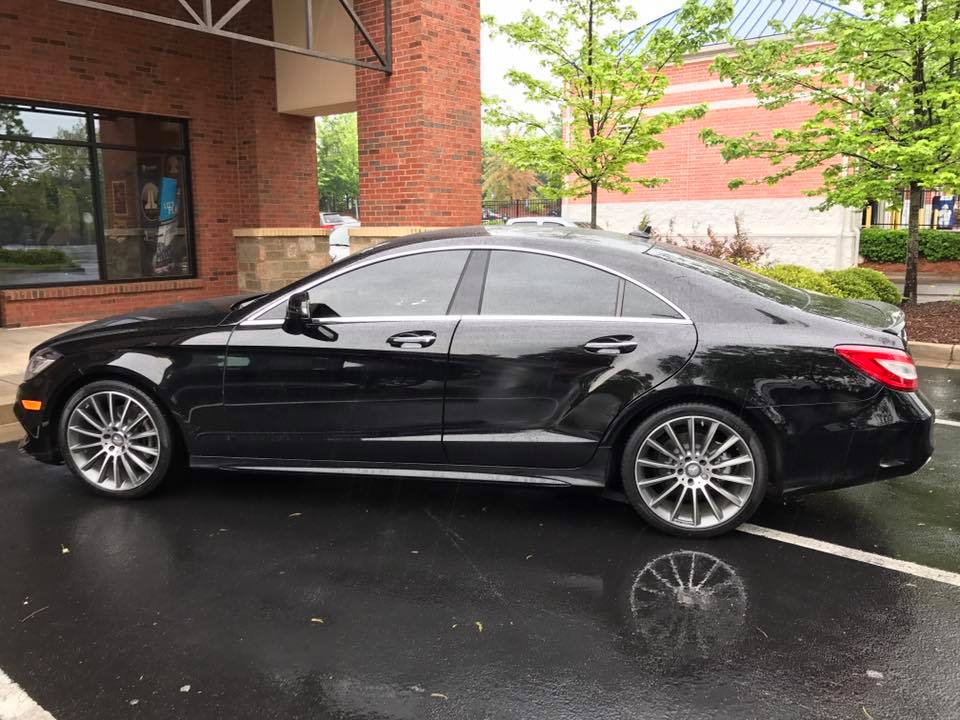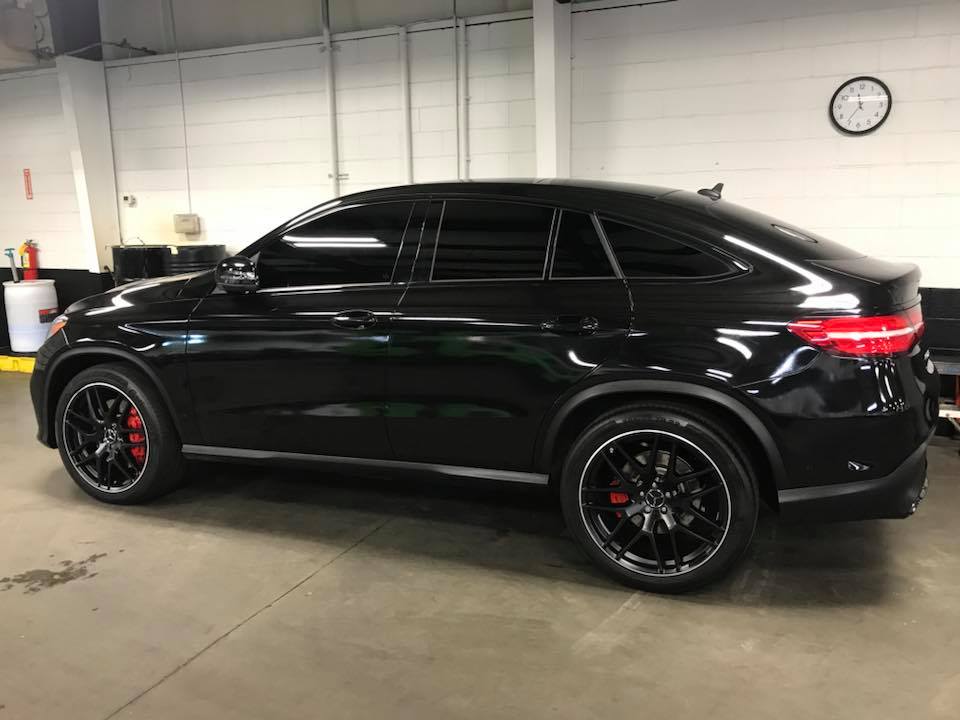Ceramic vs. Dyed Tint for Daily Drivers: What to Choose?
Navigating Alpharetta's sunny streets can quickly turn your daily drive into a challenge, with blinding glare, intense heat, and interior fading taking a toll on both you and your vehicle. Deciding between ceramic and dyed window tint is your first key step toward a more comfortable, protected cabin that stays looking sharp for years. We'll break down how dyed tint works, its pros and cons, then dive into nano-ceramic technology, comparing their performance in heat blocking, UV defense, glare reduction, durability, looks, electronic compatibility, cost, and what makes sense for Alpharetta's climate and laws. By the end, you'll know exactly which tint is the right fit for your daily driver, and how Metropolitan Tinting can deliver top-notch installation and a solid guarantee.
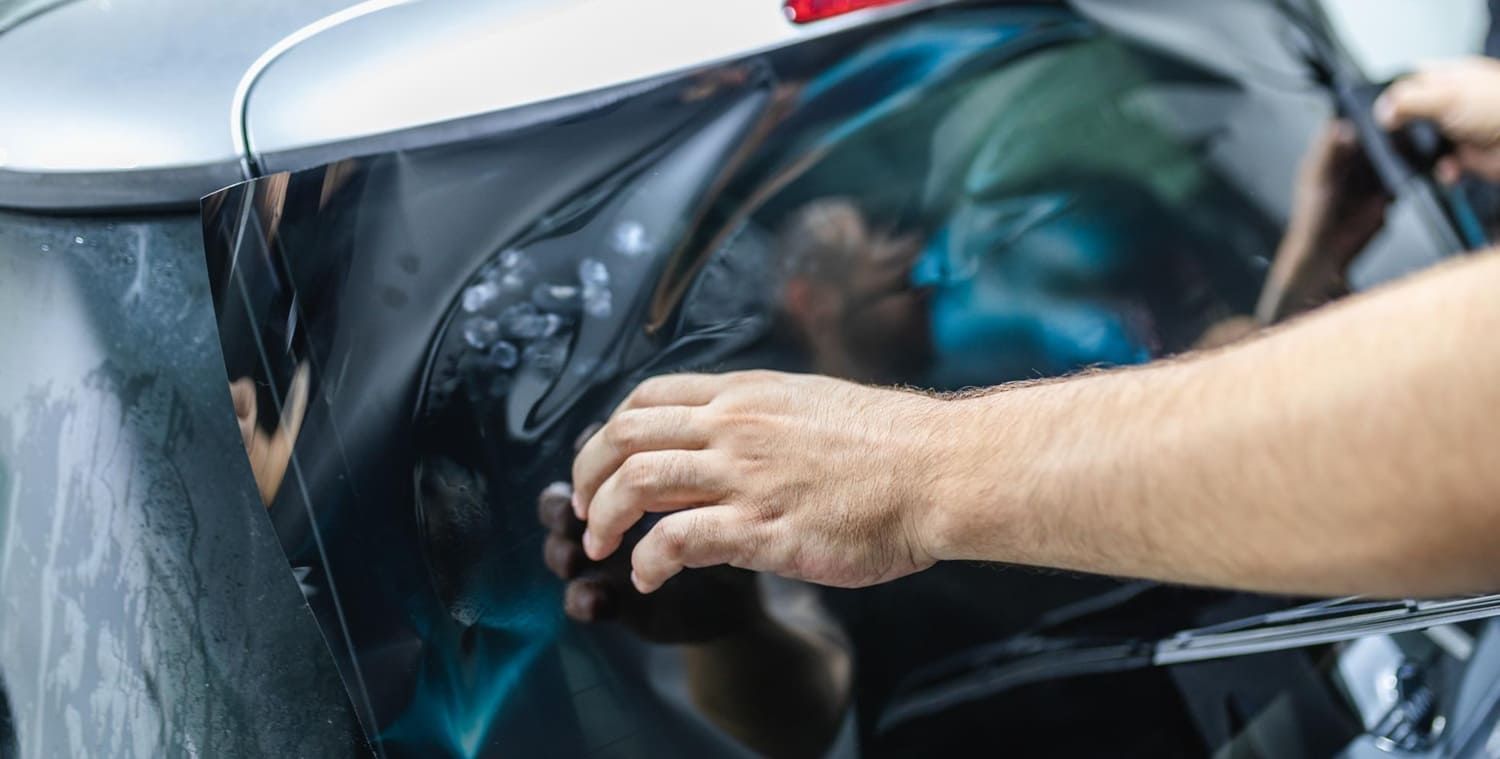
What Exactly Is Dyed Window Tint and How Does It Work for Your Daily Commute?
Dyed window tint is a budget-friendly film made from layers of dyed polyester and adhesive. It works by absorbing solar energy and reducing the amount of light that passes through, giving you privacy and cutting down glare. For everyday drivers, this film is a solid starting point. It filters sunlight by trapping and spreading it within the dye particles, which helps keep your cabin cooler and protects your interior surfaces from UV damage. Let's get into the details of what makes it tick.
What Are the Key Features of Dyed Window Tint?
Dyed window tint is a multi-layer polyester film infused with dye and carbon, attached to your glass with a pressure-sensitive adhesive.
- Boosts Privacy: The dense dye layer makes it harder to see inside, keeping occupants more private.
- Cuts Down Glare: It scatters harsh sunlight, making it easier on your eyes on bright days.
- Defends Against UV Rays: Blocks up to 98% of UV rays, preventing your dashboard and upholstery from fading.
- Offers a Matte Finish: Provides a non-reflective look that many prefer for a subtle style.
- Easy on the Wallet: Lower manufacturing costs mean it's more affordable upfront.
What Are the Advantages of Dyed Tint for Everyday Driving?
Before we look at more advanced options, dyed window tint offers some great practical benefits for your daily drive:
- Saves You Money – Its entry-level price makes it an accessible upgrade for any budget.
- Increases Privacy – A darker interior limits visibility from the outside, enhancing occupant security.
- Reduces Glare – It diffuses intense light, improving your visibility on sunny roads.
- Provides UV Protection – Helps preserve your cabin's upholstery and shields your skin from harmful rays.
These everyday perks explain why many Alpharetta drivers start with dyed tint before considering higher-performance solutions.
What Are the Limitations and Drawbacks of Dyed Tint?
While dyed film offers immediate improvements in looks and comfort, it does come with some trade-offs:
- Moderate Heat Rejection – It only absorbs some of the infrared energy, meaning your cabin will still get quite warm.
- Potential for Fading – The dye can fade or turn purplish after about 2–3 years, affecting its appearance.
- Durability Concerns – It can be more prone to bubbling or peeling if not installed or maintained perfectly.
- Shorter Lifespan – It generally doesn't last as long as higher-end film technologies.
Understanding these limitations naturally leads us to discuss the premium performance of ceramic tint.
What Is Ceramic Window Tint and Why Is It a Great Choice for Daily Drivers?
Ceramic window tint uses advanced nano-ceramic particles, not metal, embedded in a clear polyester base. These particles are fantastic at blocking infrared and ultraviolet rays without messing with your car's electronics. This cutting-edge film reflects and absorbs heat before it even gets into your cabin, keeping your interior cooler and offering superior protection for those who spend a lot of time on the road.
How Does Nano-Ceramic Technology Elevate Tint Performance?
Nano-ceramic technology boosts tint performance by using incredibly tiny ceramic beads. These beads scatter and reflect infrared radiation while keeping the visible light clear. These ceramic particles:
- Resist fading and discoloration, even with constant sun exposure.
- Block up to 90% of infrared heat, noticeably lowering cabin temperatures.
- Maintain clear optical clarity without any cloudiness or haze.
By distributing these tough particles evenly, ceramic tint keeps performing and looking great for many years, setting it apart from traditional films.
What Are the Main Benefits of Ceramic Tint for Daily Driving?
- Superior Heat Rejection – Blocks up to 90% of IR heat, keeping interiors 15–30°F cooler.
- Near-Total UV Protection – Blocks 99% of UV rays, protecting your skin and upholstery.
- No Electronic Interference – Its non-metallic makeup ensures your GPS, radio, and other devices work without interruption.
- Fade Resistance – Nano-ceramic particles keep the color and clarity stable over time.
- Enhanced Shatter Resistance – Strengthens your glass, helping to hold shards together if it breaks.
Nano Ceramic Window Film: The Upsides and Downsides
- Nano-ceramic window films are known for their non-metallic makeup, which allows them to effectively block harmful ultraviolet and infrared rays without interfering with electronic devices like GPS, mobile phones, or radio signals. This means you get uninterrupted connectivity along with top-tier heat and UV protection.
- This citation confirms that nano-ceramic technology uses non-metallic particles, which is crucial for maintaining electronic compatibility, a key advantage discussed in the article.
What Should You Consider Before Opting for Ceramic Tint?
Top performance does come with a higher price tag, and here are a few things to think about when considering ceramic film:
- Upfront Cost – Ceramic tint typically costs 30–50% more than dyed film.
- Expert Installation is Key – Getting it applied perfectly is crucial; always choose certified installers.
- Warranty Coverage – Look for lifetime limited warranties that cover fading and peeling.
- Service Availability – Make sure local technicians can provide mobile or in-shop support if you need maintenance.
Thinking through these points will help you weigh the long-term value of ceramic tint against its initial investment.
How Do Ceramic and Dyed Tints Stack Up in Heat Rejection, UV Protection, and Glare Reduction?
A direct comparison will help clarify which film best meets your needs for temperature control, UV defense, and glare management. The table below shows how dyed and ceramic tints perform side-by-side.
| Performance Metric | Dyed Tint Performance | Ceramic Tint Performance |
|---|---|---|
| Infrared Rejection (Heat) | Moderate (20–30% IR blocked) | High (up to 90% IR blocked) |
| Ultraviolet Protection (UV) | Up to 98% UV block | Up to 99% UV block |
| Visible Light Transmission | Depends on shade | Depends on shade |
| Cabin Temperature Reduction | 5–10°F cooler | 15–30°F cooler |
Looking at these numbers really highlights ceramic tint's superior ability to control heat, setting the stage for our next look at UV and glare performance.
How Much Heat Does Each Tint Type Block?
Ceramic film's nano-ceramic particles block up to 90% of infrared rays, leading to cabin temperatures that can be 15–30°F cooler on the hottest days. Dyed film, on the other hand, absorbs and holds only a fraction of the heat, providing a reduction of just 5–10°F in practice. This difference becomes even more noticeable during long, sun-baked drives in Alpharetta's summer heat.
Ceramic Window Tint Fresno: Your Ultimate Guide to Beating Central-Valley Heat
- Research shows that ceramic window films, using nano-ceramic technology, can reject a significant amount of solar energy. Some top-tier films block up to 98% of infrared heat and 99% of damaging UV rays. In contrast, traditional dyed tints typically block about 40% of solar heat. This superior performance results in much cooler cabin temperatures.
- This research directly supports the article's claims regarding the superior heat rejection and UV blocking capabilities of ceramic tint compared to dyed tint, including specific percentages and brand references.
How Effective Is Each Tint at Blocking UV Rays?
Both types of tinted films offer strong UV defense, but ceramic tint has a slight edge, blocking 99% of UVA and UVB rays compared to dyed film's typical 98%. That small increase can make a big difference in reducing skin damage risks and protecting your leather, vinyl, and plastics from premature cracking or fading over many years.
Which Tint Provides Better Glare Reduction for Daily Drivers?
While dyed tint helps reduce glare by scattering visible light through its dye layer, ceramic film offers more consistent glare reduction thanks to its finely dispersed ceramic nanoparticles. This leads to sharper visibility and less optical distortion, helping drivers stay more focused during bright sunrise and sunset commutes.
How Do Durability, Aesthetics, and Electronic Compatibility Differ Between Ceramic and Dyed Tints?
Which Tint Resists Fading, Bubbling, and Peeling Better?
This durability comparison shows how each film holds up over time.
| Durability Aspect | Dyed Tint | Ceramic Tint |
|---|---|---|
| Color Stability | Can turn purplish within 2–3 years | Maintains original color indefinitely |
| Bubbling/Peeling | Higher risk if installation isn't perfect | Resistant when installed correctly |
| Scratch Resistance | Moderate | Excellent, thanks to hard ceramic particles |
Which Window Tint Lasts Longest? Dyed, Ceramic & Carbon
- Ceramic window tints are known for their superior durability and longevity, resisting fading, bubbling, and discoloration even after extended sun exposure. Dyed tints, however, are more prone to fading over time, often developing a purplish hue and needing replacement sooner due to a shorter lifespan.
- This citation verifies the article's points on the differing durability and lifespan of ceramic versus dyed window tints, highlighting ceramic's resistance to degradation and dyed tint's susceptibility to fading.
How Do Ceramic and Dyed Tints Affect Vehicle Appearance?
Ceramic films maintain consistent clarity and color depth without any haziness, while dyed films can have a slightly matte look that fades over time. Both types are available in various VLT (Visible Light Transmission) options to suit your style preferences, but ceramic tint's stable finish ensures your vehicle keeps that showroom look year after year.
Does Either Tint Interfere with Electronics Like GPS or Radio?
Neither dyed nor ceramic films contain metal particles, so both allow for seamless signal reception for GPS, mobile data, Bluetooth, and AM/FM radio. This means you'll have uninterrupted connectivity on every drive.
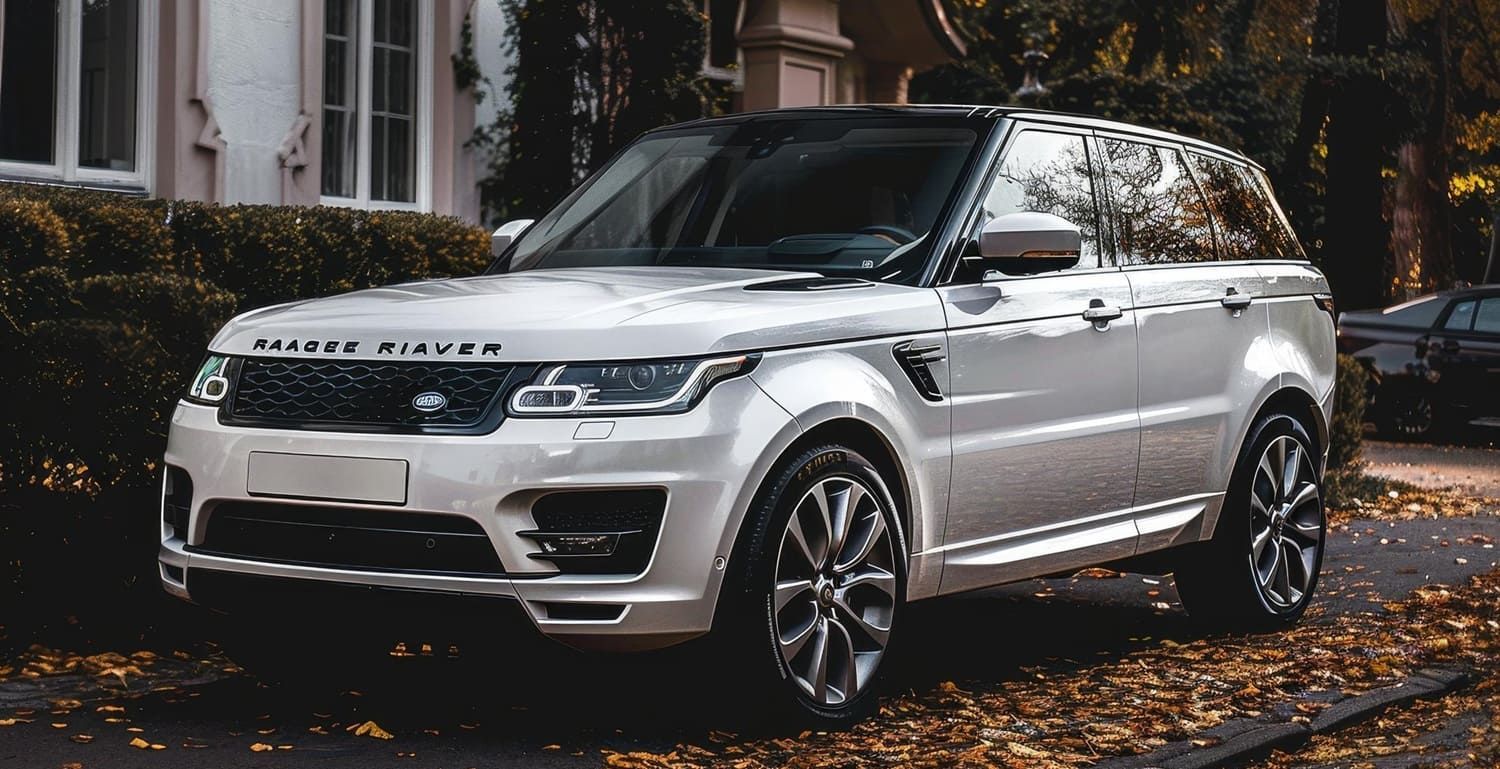
What Are the Cost Differences and Long-Term Value of Ceramic vs. Dyed Tint for Daily Drivers?
What Is the Initial Investment for Each Tint Type?
- Dyed Tint: Starts around $150–$200 for standard sedan windows.
- Ceramic Tint: Typically ranges from $300–$450, depending on the quality and your vehicle's size.
These figures show why dyed film is attractive for budget-conscious drivers and why ceramic tint appeals to those seeking the best performance.
How Does Tint Choice Impact Energy Savings and Interior Preservation?
Investing in ceramic film can reduce your air conditioning needs by up to 30%, which means less fuel consumption and less strain on your engine. Both tint types also protect plastics, fabrics, and leather from UV damage. Over several years, ceramic tint's superior temperature control can save you hundreds of dollars in energy costs and interior repairs.
What Warranty and Service Guarantees Does Metropolitan Tinting Offer?
Metropolitan Tinting stands behind every installation with a lifetime limited warranty that covers fading, bubbling, peeling, and adhesive breakdown. As an authorized LLumar dealer, we back our ceramic and dyed films with manufacturer support and expert service to ensure your investment is protected long after we're done. For complete protection and peace of mind, trust our certified technicians to deliver outstanding results.
How Do Local Factors in Alpharetta, GA Influence Your Choice Between Ceramic and Dyed Tint?
What Are the Legal Window Tinting Regulations in Alpharetta?
Georgia law allows a minimum Visible Light Transmission (VLT) of 32% on front side windows and the non-tinted strip of the windshield above the AS-1 line. Rear side and back windows have no VLT restrictions, as long as emergency medical personnel can see occupants. Following these rules ensures you stay legal and safe.
How Does Alpharetta’s Climate Affect Tint Performance Needs?
Alpharetta sees summer highs in the upper 80s to mid-90s°F with plenty of sunshine year-round. This makes high IR rejection crucial for keeping your cabin cool and reducing AC use. Ceramic film is particularly appealing for drivers who spend a lot of time on major roads like GA-400 and State Bridge Road.
Why Choose Metropolitan Tinting for Professional Tint Installation in Alpharetta?
With decades of experience serving Alpharetta drivers, Metropolitan Tinting offers mobile or in-shop installation performed by certified technicians using premium LLumar and KAVACA products. Our dedication to precision, customer satisfaction, and comprehensive warranties has made us the go-to local experts for automotive window tinting and paint protection.
What Are the Most Common Questions About Choosing Between Ceramic and Dyed Tint?
Is Ceramic Tint Worth the Extra Cost for a Daily Driver?
Ceramic tint justifies its higher price through superior heat rejection, near-total UV protection, and lasting color stability. This translates into better cabin comfort, energy savings, and preservation of your interior surfaces, ultimately outweighing the initial investment over your vehicle's lifetime.
How Long Does Dyed Tint Typically Last Before Fading?
Quality dyed films generally maintain their color and performance for 2–3 years before you might notice signs of fading or a slight purplish hue. At that point, replacement can restore privacy and glare reduction at a relatively low cost compared to premium alternatives.
Will Ceramic Tint Affect My Car’s Electronics or Signal Reception?
Ceramic window films are non-metallic and contain no conductive particles, so they won't interfere with GPS navigation, mobile data reception, Bluetooth connectivity, or radio signals, ensuring your electronics work seamlessly throughout your daily commute.
How Can I Schedule a Professional Tinting Appointment with Metropolitan Tinting?
Ready to upgrade your daily driving experience with expert window tinting? Request a free, no-obligation quote through our Free Window Tinting Estimate form, and let our certified technicians help you find the perfect ceramic or dyed solution for your vehicle.
Enjoy cooler, safer, and more comfortable drives in Alpharetta by choosing the right tint and trusting Metropolitan Tinting for flawless installation and a lifetime of service protection.




